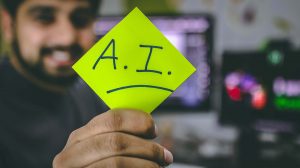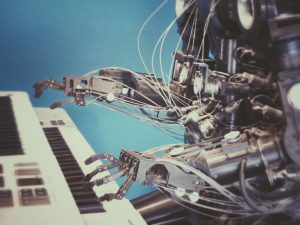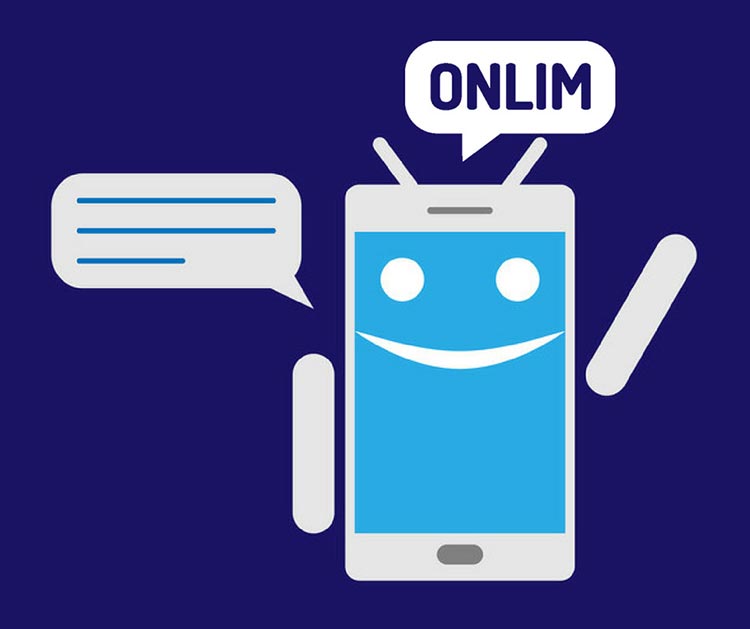Artificial Intelligence vs. Machine Learning vs. NLP
It can be more challenging to fully understand the different domains of artificial intelligence, the ongoing developments, and what the different abbreviations actually mean, than grasping the basics of the technology itself.
You can hear everywhere that artificial intelligence, machine learning and natural language processing (NLP) are going to have a bright future and soon enough everything will be automated and run by bots. More and more aspects of our lives are touched upon by artificial intelligence like voice assistants, such as Alexa or Siri, or chatbot solutions that are being used in customer service, marketing or sales.
Download our free e-book to learn everything you need to know about chatbots for your business.
You are currently viewing a placeholder content from Default. To access the actual content, click the button below. Please note that doing so will share data with third-party providers.
As we are still dealing with very recent technological developments, many of the terms are being used synonymously. People are talking about AI when they actually mean machine learning or NLP and vice versa. Granted that this is not too surprising as all these aspects are interrelated.
For your convenience and future clarity, we are going to introduce you to the differences between artificial intelligence, machine learning and natural language processing in this article.
Artificial Intelligence
Artificial intelligence or AI is a term that was mentioned in 1956 for the first time by John McCarthy. He put out the theory that it would be possible to program a machine in a way that it could self-sufficiently learn from its environment without needing the direct input of a human being.

Therefore, artificial intelligence can be described as a machines’ capacity to work on tasks that would previously need the attention of human intelligence. Especially capabilities like planning, understanding languages, recognizing environments, learning and problem solving are strongly connected to the advent of artificial intelligence.
AI can be understood as a program that is able to engage with problems through rules and probabilities and solve tasks efficiently. The main objective of artificial intelligence is to create machines with the ability to make intelligent decisions based on past experiences.
To accomplish this ambitious goal certain core functionalities are needed. Two of these are machine learning and natural language processing.
Machine Learning
For machines to act self-sufficiently and intelligently they need to learn just like humans. A focus is put on developing a general understanding of the world and use it to make informed decisions.
Therefore, the process of a machine learning is quite simply called ‘machine learning’. An algorithm is enabling the machine to learn through data input and past experiences. Based on these experiences the machine is creating models of reality that are used to interpret the ongoing events. Depending on the experienced situation certain patterns can be picked up and used to weigh potential courses of action.

Machine learning is mainly used to work on complex data sets which could be engaged by humans too. Yet, the computational speed of machines is just many times faster and better suited for the tasks at hand. Decisions can be based on gigantic data sets, thereby enabling the AI to base its decision on highly statistically relevant inputs.
Natural Language Processing
We can give access to machines to our world through data. The only problem with this approach is the necessity to make our own world readable for machines by creating specialized code. This is time-consuming and impractical if we are aiming for full integration of AI into the human experience.
That’s why natural language processing is creating ways through which machines are able to understand written and spoken language.
Without a doubt, this is a more than complex endeavor, because human language is multi-layered and -faceted. Finding ways for a machine to understand human language, it has to be translated into a format that can be deciphered and put into action.
For this to work, we must teach machines how languages work. They have to learn the grammatical and syntactical basics and be able to analyze specific patterns. When confronted with human language the machine needs to be able to understand the words according to their grammatical context.
Get weekly updates, tips and tricks just like that into your inbox.
In another step, language needs to be parsed for specific semantical expressions. What is the combination of words trying to express and how do the parts of the sentence relate to each other to create meaning?
Having mastered the syntactical and semantical layers machines get access to a systematic approach of understanding language.
This is where it all comes together, and we can gain a deeper understanding of the process of creating artificial intelligence: A situation calls for an artificially intelligent solution by a machine which will be based on the analysis of past experiences and data – called machine learning. The machine learning is backed up through continuous interactions of humans and machines that are empowered by the machines’ ability to understand natural human language (NLP).
At Onlim we are specializing in bringing the different layers and processes of AI development together. Our solutions implement best practices in machine learning and natural language processing to be able to create the best fitting solution for you and your business.
What are Large Language Models (LLMs)?
March 18th, 2024|
What are chatbots and how do they work?
November 23rd, 2023|
The AI Act and its impact on the use of chatbots
October 27th, 2023|



